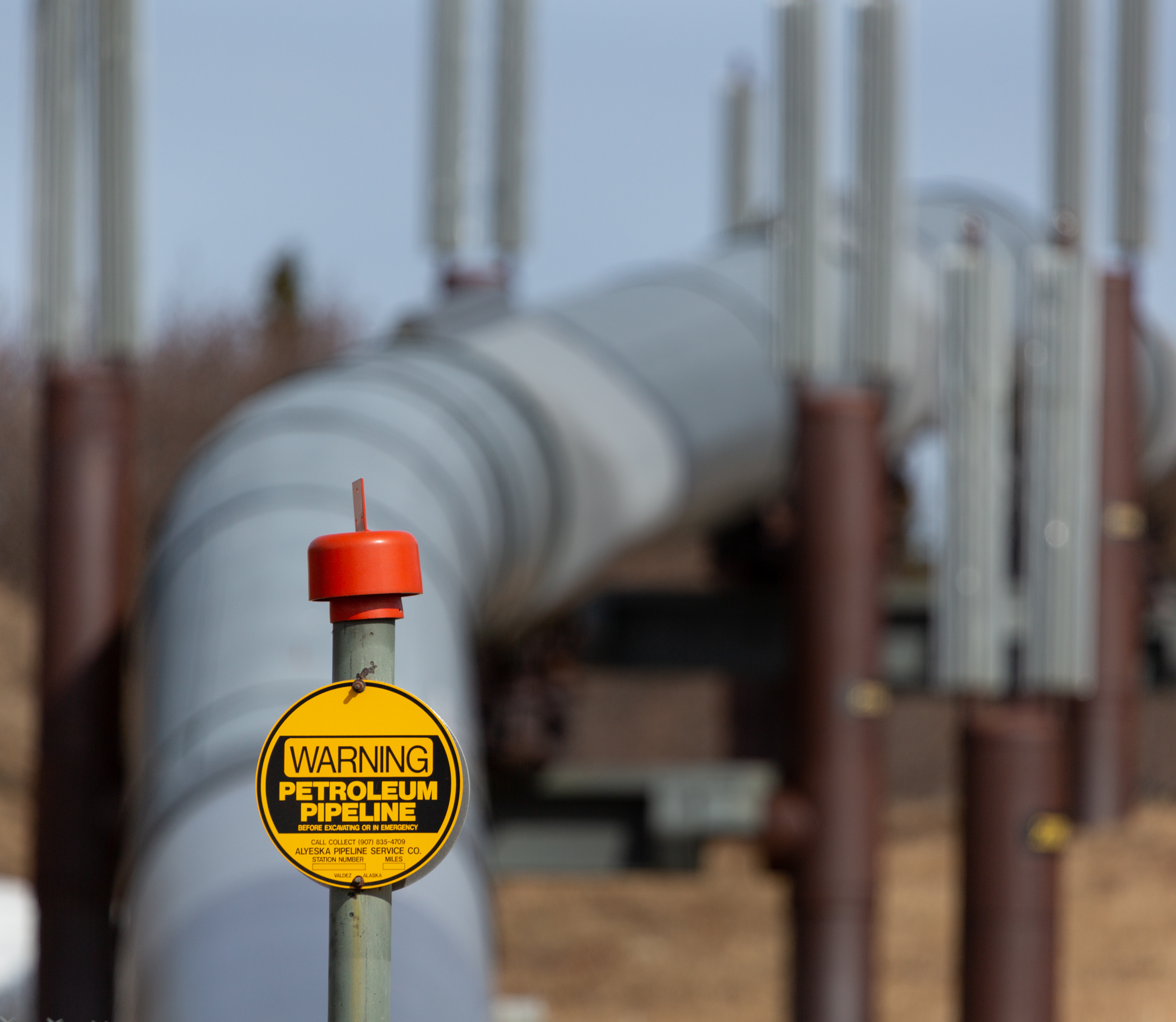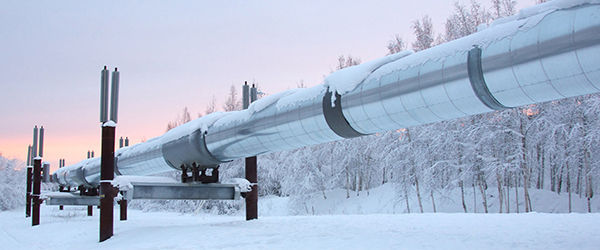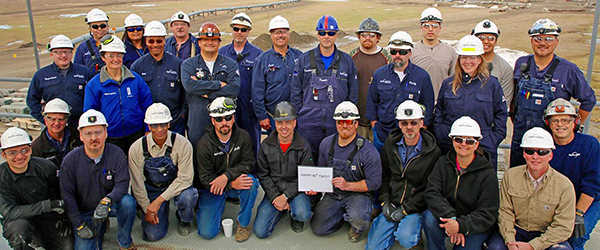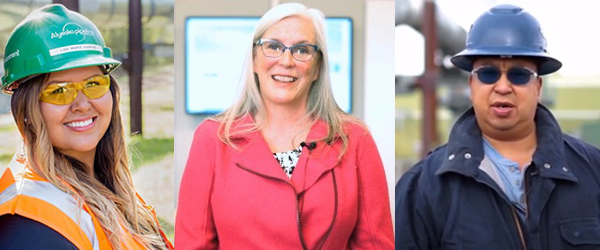Emergency Reporting / Public Awareness Program

Spill & Pipeline Emergency Reporting
PIPELINE EMERGENCIES ONLY: Call Alyeska collect: (907) 835-4709.
What to do in case of a pipeline-related emergency
The Trans Alaska Pipeline System (TAPS) was designed and constructed to the highest standards to safely transport crude oil from the North Slope to Valdez; however, emergencies may still occur. TAPS consists of an 800-mile 48-inch oil pipeline, a smaller 148-mile fuel gas pipeline that runs underground from Pump Station 1 to Pump Station 4, and other above-ground and buried lines on the Valdez Marine Terminal and at other TAPS facilities.
Recognizing a leak
If you are near one of the pipelines during an emergency, you may detect an oil or natural gas leak by:
- Smell: Crude oil may have an odor similar to fuel oil or gasoline. Natural gas leaks may be detected by a pungent, rotten egg or sulfur odor.
- Sight: A pool of dark liquid or discolored vegetation near the pipeline may indicate a crude oil leak. A dense white cloud or fog and flames may indicate a natural gas leak.
- Sound: An unusual noise, hissing or roaring sound may be a sign of a leak.
- If a leak occurs:
- Do not approach or enter the area where the spill, leak or vapor cloud is located.
- Leave the area immediately.
- Do not touch leaking liquids or breathe leaking gasses.
- Do not create sparks, light matches, start an engine, switch on a light, use a camera flash or cellular telephone. These actions may ignite the leaked or spilled substance.
- Warn others nearby of the possibility of a pipeline release.
From a safe location, call Alyeska Pipeline Service Company at (907) 835-4709, or contact 911 or other local emergency response numbers. Provide your name, location, description of the leak or possible leak, and information on how you can be contacted.
Excavating near the pipeline: Alyeska’s Damage Prevention Program
Some portions of TAPS and the Fuel Gas Line are buried. Excavation- and installation-related activities are prohibited along all portions of the right-of-way, unless prior authorization from Alyeska Pipeline Service Company has been received. Alyeska’s Damage Prevention Program was designed to reduce and eliminate excavation- and installation-related accidents. Call (907) 787-8870 to reach an Alyeska representative or simply dial 811 for information regarding excavation and installation requirements near the pipelines.
Public Awareness Program
Alyeska Pipeline Service Company’s ongoing Public Awareness Program educates those working and living near TAPS about the pipeline’s location and what to do in case of an emergency.
As part of the program, Alyeska contracts with Alaska Digline, Inc., a one-call service. Anyone who plans activity near the pipeline can call Digline at 811 to check on TAPS’ location.
All pipeline operators in the United States are required to have public awareness programs. Programs are routinely audited by the United States Department of Transportation to ensure their effectiveness.
FOR PIPELINE EMERGENCIES ONLY, call Alyeska at (907) 835-4709 or 911.



